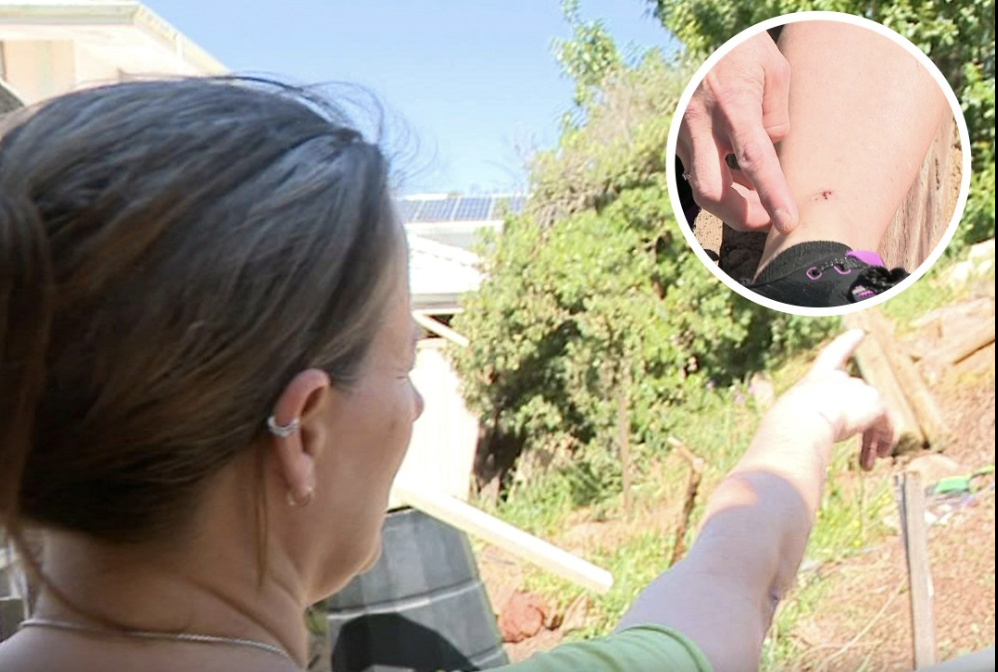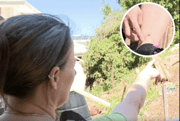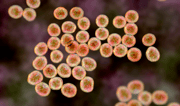
Tracey Alexander was simply tending her garden on what seemed like an ordinary Perth afternoon.
Pulling weeds in her backyard–a routine task many of us tackle as the weather warms–quickly turned into a life-threatening emergency when she felt something scratch her ankle.
Looking down, the 48-year-old mother of six discovered she'd been bitten by a tiger snake, one of Australia's most venomous reptiles.
What happened next offers valuable lessons for anyone who spends time in their garden, particularly during the warmer months when snakes are most active.
While Tracey's experience was undoubtedly frightening, her story actually highlights something remarkable about snake bite treatment in Australia.
Despite having some of the world's most venomous snakes, Australia only records about two deaths from snake bites annually, compared to over 51,000 deaths in India each year.
Recent medical research shows that of the 835 people who experienced snake envenoming across Australia over a decade, tiger snakes accounted for 17 per cent of cases, while brown snakes were responsible for 41 per cent.
The good news? With approximately 3000 snake bites occurring annually in Australia, resulting in about 500 hospital admissions, the vast majority of people survive their encounters.
'It's a bit scary. I keep seeing that snake head in my head. Don't think that's going away in a hurry.'
As warmer conditions return, both snakes and humans become more active outdoors, leading to increased likelihood of interaction, particularly when people are gardening.
For those who love pottering about in their gardens, prevention strategies can significantly reduce your risk.
Keep your garden tidy by cutting grass and maintaining it at a lower height – snakes have less hidden space to explore and will be more visible to spot.
Keep all bushes, shrubs, and trees pruned, ensuring no branches lead to your roof or are touching the house.
Avoid using mulch, rocks, and larger building materials as they attract snakes. Consider using smaller fitted rocks like slabs, gravel, or river rock to prevent snakes from hibernating in these spots during colder months.
Snake season in Australia runs from September through April, when snakes come out of brumation during warmer months to hunt, find water, mate, and breed.
If it's not possible to keep grass short, wear closed-in shoes and long pants, and keep your eye out for snakes while gardening.
Snake-deterring plants for your garden
While not foolproof, certain plants may help discourage snakes: marigolds (strong sulphur scent), lemongrass, garlic and onions (sulfonic acid content), and mother-in-law's tongue (sharp, pointy leaves). Remember, these plants don't guarantee snake-free gardens, so always remain vigilant.
Tracey's 17-year-old niece acted quickly, applying pressure to the wound with a belt tourniquet and bandaging her leg.
While her quick thinking was admirable, this response highlights a dangerous misconception about snake bite first aid.
Arterial tourniquets, which cut off circulation to the limb, are potentially dangerous and no longer recommended for any type of bite or sting in Australia.
Snake venom travels through the lymphatic system–tiny tubes throughout the body that return fluid to the bloodstream. Muscles act as a 'pump' to move fluid through this system, which is why staying still is vital to slow venom spread.
The proper first aid technique uses pressure immobilisation bandaging (PIT), which works very differently from a tourniquet:
1. Apply a firm bandage over the bitten area using a wide elasticised bandage if available, then bandage the entire limb (fingers to shoulder or toes to hip)–as tight as you would for a sprained ankle
2. Apply a rigid splint to the limb and keep still while awaiting ambulance transport
3. Don't wash the bitten area – venom residue on the skin may help medical personnel identify the snake type
Essential snake bite first aid:
- Call 000 immediately
- Keep the victim calm and still
- Apply pressure immobilisation bandaging (not a tourniquet)
- Don't wash the bite site
- Never attempt to catch or kill the snake
- Get to hospital as quickly as possible
Understanding snake behaviour can help you plan your garden activities more safely. Most snake incidents occur in warmer seasons when snakes are more active.
Snake bites received earlier in the season (spring/early summer) may be more severe, as the snake's venom glands are fuller than later in the season.
Many people think there's an influx of snakes when weather warms, but snakes undergo a reduced activity period from April to August spent in brumation or hibernation. They haven't increased in numbers – they've just become more visible.
Did you know?
A Curtin University study found that only 58 per cent of Western Australians could correctly identify three common snake species, with adults better at identification than children. Learning to recognise local snake species can be a valuable safety skill.
Never attempt to catch or kill a snake–this is illegal and snakes are incredibly important to the local ecosystem. There are many professional snake catchers who will safely and humanely relocate your visitor.
Snake identification can be tricky – a brown-coloured snake may not be an eastern brown snake. If someone is bitten, don't waste time trying to catch or kill the snake.
Perform first aid and go straight to hospital, where medical staff can test the bite site to determine the species.
Example Scenario
What Tracey did right: She recognised the bite immediately, her family called 000 straight away, and they didn't attempt to capture or kill the snake.
What could have been better: Using pressure immobilisation bandaging instead of a tourniquet, though her niece's quick action likely still helped slow venom movement.
Before you ever encounter a snake, find a good snake consultant or catcher in your area to remove stress from trying to find one while panicked. Keep their contact details handy.
Research shows that 45 per cent of snake bite victims continued moving around after being bitten, raising questions about first aid knowledge. Having a clear action plan can make all the difference.
Tracey Alexander spent one night in Joondalup Health Campus and returned home safely to her family–a testament to Australia's excellent emergency medical response and antivenom availability.
As you head out to enjoy your garden this season, remember that a bit of preparation and awareness goes a long way. Stay alert, stay safe, and keep those snake catcher numbers handy.
A bit scary: Perth mum bitten by tiger snake while gardening in her backyard
https://www.kidspot.com.au/news/a-b...d/news-story/32090a74cd3694e19bd25625599fb8a0
'Most incidents occurred in warmer seasons when snakes were more active.'
https://www.unimelb.edu.au/newsroom...ke-bites-in-australia-facts-stats-and-stories
'This may happen when people are hiking, dog-walking or gardening.'
https://www.uwa.edu.au/news/article...bitten-and-what-if-youre-a-long-way-from-help
'Although 63,000 people a year die from snakebites, Australia only recorded two casualties.'
https://pangovet.com/statistics/snake-bite-statistics-australia/
'He said two people died in Australia that year from snakebites in contrast to more than 51,000 deaths in India.'
https://www.jcu.edu.au/news/releases/2022/october/snakes-deadly-global-toll
'Results: 1548 patients with suspected snakebites were enrolled, including 835 envenomed patients (median, 87 per year)...'
https://www.mja.com.au/journal/2017/207/3/australian-snakebite-project-2005-2015-asp-20
'Despite this, there are still approximately 3000 snakebites annually in Australia, resulting in approximately 500 hospital admissions and, on average,...'
https://pmc.ncbi.nlm.nih.gov/articles/PMC10586896/
'As warmer conditions return both snakes and humans become more active in the outdoors, leading to an increased likelihood of interaction.'
https://www.uwa.edu.au/news/article...bitten-and-what-if-youre-a-long-way-from-help
Original article
Fatal snake bites in Australia: facts, stats and stories
Snakes are waking up. What should you do if you're bitten?
16 Australian Snakebite Statistics to Know in 2025
Snakes’ deadly global toll – JCU Australia
The Australian Snakebite Project, 2005–2015 (ASP-20) | The Medical Journal of Australia
The Incidence of Infection Complicating Snakebites in Tropical Australia – PMC
Snakes are waking up. What should you do if you're bitten? (UWA)
Have you had any close encounters with snakes in your garden? What safety measures do you take during the warmer months? Share your experiences and tips with fellow gardeners in the comments below.







